Have you ever questioned why some websites consistently rank high in search engine results? Often, the answer lies with off-page SEO.
A critical but frequently overlooked part of an effective digital marketing plan. In this day and age where competition is intense online, recognizing how to use off-page techniques effectively can make all the difference between having success on your website or being cast aside into oblivion digitally.
But what exactly does it mean by ‘off-page’ SEO, and how do we leverage its strength to bring our site up top for web searches?
Let’s uncover Off-Page Search Engine Optimization. Dissect each component within, and discuss advanced strategies explicitly used with it. Also, going over typical issues that one should be aware of when working towards optimization along with monitoring & measuring results from these SEO efforts applied to their domain.
By the time you reach the end goal here today: You will have obtained more profound knowledge concerning Off Site measures regarding organic ranking while gaining the ability to reap maximum visibility plus strengthen authority among leading search engines like Google.
Key Takeaways
- Off-page SEO involves link building, branded searches, and social media engagement to improve search engine rankings.
- Quality is key when it comes to off-page SEO. Unnatural link building can result in penalties and damage a website’s reputation.
- Monitor backlink profiles, track brand mentions, and assess social media performance for successful off-page optimization efforts.
Table of Contents
Understanding Off-Page SEO
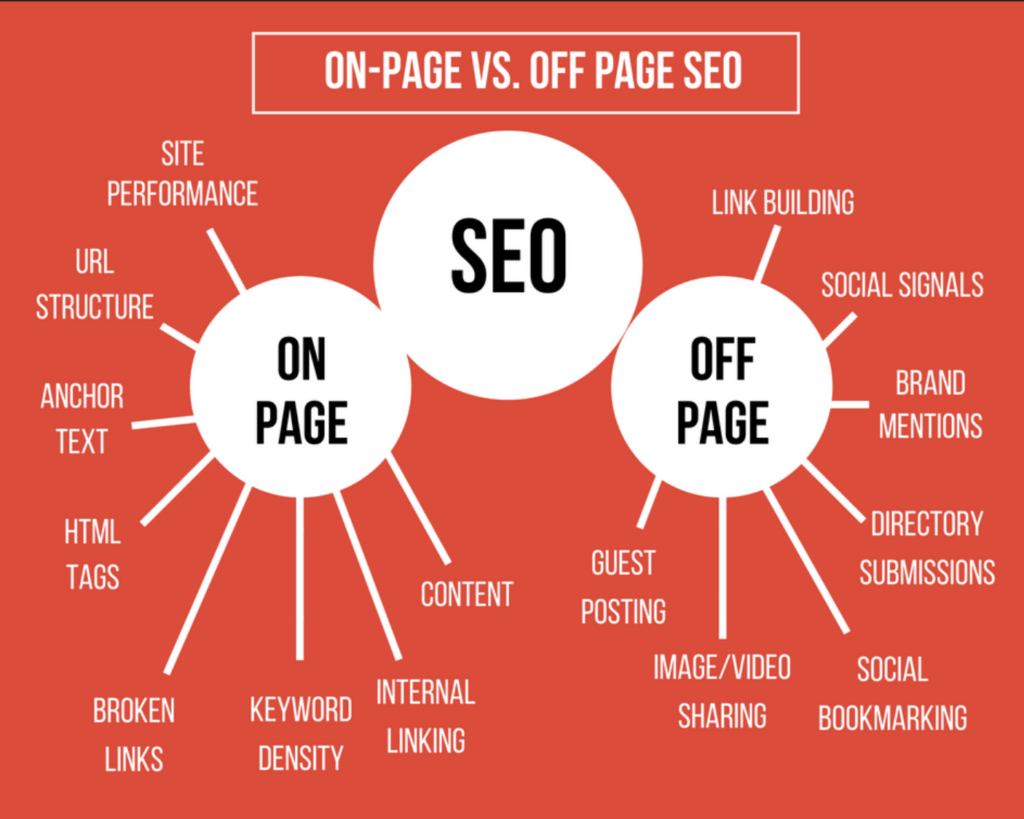
Off-page SEO, also termed as off page optimization, is an approach to augmenting search engine rankings and visibility outside of a website.
It involves link building and social media marketing, which helps in fostering the overall presence online for any business looking forward to increase their reach on the internet. Consequently, forming an effective off-page strategy becomes indispensable when it comes down to successful execution of SEO.
The areas such as making backlinks, encouraging branded searches & increasing engagement with followers through social media. Must be taken into consideration while constructing this tactical plan. So that there are no common mistakes committed in achieving higher rank among various search results generated by different engines.
You should take care that only websites offering high linking authority values get incorporated within your campaign. Instead of gathering low value ones from untrustworthy sources which would otherwise not bring success towards your desired objective.
Without effectively crafting SEO tactics that need careful balance along with avoiding errors associated with them during its implementation process.
The Role of Off-Page SEO
Enhance your website’s trustworthiness, online presence and status. As these all will eventually contribute to better rankings.
Links have strong relevance for Google along with other popular internet search tools like Bing or Yahoo, so without off page SEO connections pointed towards the web site it would be close to impossible for any search engine algorithm to rank that particular webpage appropriately.
Link building efforts alongside using social media platforms play an important role when ranking on such other search engines: this demonstrates how relevant off-page optimization really is for optimizing visibility across different searches through various means.
When dealing with developing quality links naturally, steering away from manipulative techniques can benefit your position more than almost anything else. Which leads us right back into talking about the role of Off Page Optimization within a full fledged strategy you deploy in attempting to achieve increased SERP results.
Applying proper methods regarding building relationships strategically while acquiring new ones will also influence success. Through improving standards found within reviews posted by others on their websites, but overall gaining traffic is still amongst the main goals worth pursuing. Focusing heavily on establishing long lasting standings instead of short bursts followed closely after just becoming relatively visible initially due to rising competition having been created.
Off-Page vs. On-Page SEO
Off-page SEO focuses on external forces that impact a website’s search rankings elsewhere. While its counterpart on-page SEO pertains to optimizing the content and structure of the site itself.
Off-page techniques such as link building, local marketing tactics, and social media promotion aid in improving visibility in search engine results.
Meanwhile, on page optimization works by amending elements within a webpage to make it more navigable for web crawlers and friendly for users alike.
Both strategies are pivotal if you want your online presence bolstered with better search standing and an expanded base of visitors—they function seamlessly towards these goals.
Key Components of Off-Page SEO Strategy

There are a few off page SEO factors to keep in mind. Here are three key parts to take into account:
- Local SEO
- Social media marketing
- Link building
By using multiple platforms such as press releases and guest blogging, it is possible to increase the reputation of your website online by natural links and increasing external signals.
For instance, a research study made a brand mention & helped acquire backlinks from many different sources with just one single release.
The following sections will go more in depth about these components so we can provide instructions on implementing successful strategies.
All together with tips that are applicable right away.
Link Building
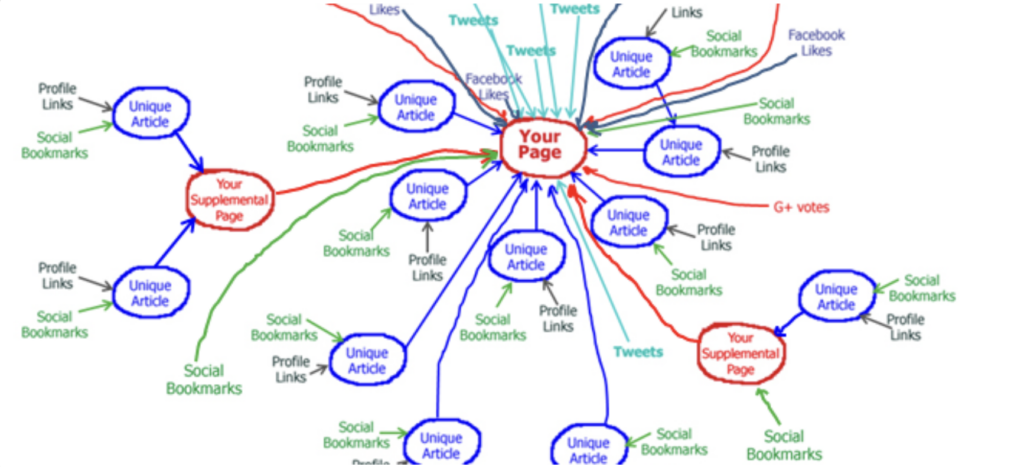
Gaining backlinks from credible and applicable websites to boost search engine standings is known as link building. As Google assesses links when computing rankings, they are viewed as an authentic sign of a site’s trustworthiness, reliability and authority.
An organized plan for constructing those connections entails numerous methods such as generating new ones.
Broken Link Building
Broken link building stands out as a valuable strategy that involves identifying defunct links on external websites and substituting them with links pointing to your own site. This tactic not only serves as an excellent avenue for earning backlinks but also showcases your content’s value to others in your industry, as they deem it worthy of being linked to.
Identifying broken links can be accomplished in various ways. Advanced tools like Ahrefs or SEMrush provide an automated way to crawl websites and pinpoint any broken links.
Alternatively, you may opt for a manual approach by detecting 404 errors in the browser’s address bar.
Once the broken links are uncovered, your next move is to reach out to the website administrators. This involves presenting a compelling proposition to replace the defunct links with functional ones leading to your site.
As you undertake this task. It’s crucial to communicate your website’s value as a replacement for the broken link, offering a cogent explanation for the swap.
The process of broken link building is an effective method of securing backlinks but calls for careful execution. Inappropriate or irrelevant outreach can result in being blacklisted or ignored counteracting your SEO efforts.
For successful implementation, focus on relevant websites with substantial traffic rather than targeting any site with a broken link. Customize your outreach emails, taking time to elucidate why your site would serve as an excellent replacement.
It’s also crucial to be patient, as this method might not yield immediate results, but the payoff in terms of enhanced SEO is worth the wait.
Skyscraper Technique
The inception of this process requires identifying compelling content within your sphere of interest. Using a tool like Ahrefs simplifies this task by revealing content with an extensive backlink profile.
Upon discovering such content, your next mission is to surpass it. Enhancing the content could entail incorporating additional insights, refreshing the data with recent information, or making the content visually more engaging.
Following the creation of your refined content, the next phase involves its strategic promotion. This could be accomplished by sharing the content across social media platforms, submitting it to relevant directories, or leveraging guest blogging opportunities on other sites.
Subsequent to your promotional efforts, reaching out to the original linkers, and encouraging them to link to your superior content is the final step.
For an efficacious implementation of the Skyscraper Technique, consider the following tips:
- Selecting an engaging topic is critical. Ensure that your skyscraper content focuses on a subject with substantial interest and pre-existing content.
- The quality of your content is paramount – to attract backlinks, your content must be excellently crafted, informative, and aesthetically pleasing.
- Effective promotion of your skyscraper content is another integral aspect, ensuring it garners the attention it deserves.
- Exercise patience – building backlinks is a process that yields results over time, not instantaneously.
Help a Reporter Out (HARO)
Help a Reporter Out, commonly referred to as HARO, is an invaluable service that creates a connection between journalists seeking information and sources possessing the requisite expertise. This free platform allows journalists to post inquiries, to which sources can respond with their professional knowledge.
If your contribution is included in a journalist’s article, your website typically garners a backlink.
Utilizing HARO can prove advantageous for your website’s link-building strategy. The primary benefits include acquiring high-quality backlinks, as these typically originate from journalists affiliated with reputable publications.
HARO’s user-friendly interface makes it easy to navigate – simply sign up and begin responding to inquiries. Moreover, it allows for targeted backlinks, enabling you to choose inquiries that align closely with your area of expertise.
However, employing HARO for link building also presents some challenges.
The platform can be competitive, demanding that your responses stand out in terms of quality. It also necessitates a considerable time investment, both in formulating responses to inquiries and in cultivating relationships with journalists. Furthermore, it’s worth noting that HARO doesn’t guarantee backlinks – there may be instances where your input is used without a corresponding backlink to your site.
Despite these challenges, HARO can serve as an excellent tool for obtaining high-quality backlinks, provided you understand its intricacies and adopt the right approach. Here are some best practices for using HARO effectively:
Responding to relevant queries will increase the likelihood of your input being incorporated into an article, so it’s prudent to choose inquiries within your niche. Quality is paramount – responses should be well-articulated, insightful, and incorporate links to your website. Building rapport with journalists can prove fruitful, potentially leading to more backlinks in the future.
Qwoted
Qwoted serves as a valuable bridge connecting experts, speakers, and other sources with the media. This innovative platform is geared towards enabling journalists to easily find authoritative voices to enrich their articles, while simultaneously providing professionals a wider stage to highlight their expertise and work.
When a journalist is seeking an expert perspective for an article, they turn to Qwoted. With advanced search capabilities allowing for keyword, industry, or location-based queries, they can find and engage with the expert that suits their needs.
Upon mutual interest, the expert can furnish their contact information for direct communication with the journalist. This process ensures your expertise can be leveraged in a larger context, potentially reaching millions of readers.
The advantages of using Qwoted are manifold. Primarily, it allows your work to garner a broader audience. By connecting with journalists on Qwoted, you have the opportunity to cultivate professional relationships that could lead to recurrent mentions in their articles.
Thus, if you are a subject matter expert looking to expand your reach and fortify connections with journalists, creating a profile on Qwoted is a proactive step worth considering.
Linkable Assets
A linkable asset is a piece of content uniquely tailored with the potential to attract backlinks. Constructing a linkable asset requires a thorough understanding of your audience and the content value. The information you provide should be engaging, well-articulated, and significantly beneficial to your readers.
The relevance of your content to your target audience is key. For instance, if you’re seeking to draw links from businesses within your industry, your content should delve into topics pertinent to these businesses.
Moreover, a crucial characteristic of a successful linkable asset is its evergreen quality. Content with lasting relevance continues to be a valuable resource long after its initial publication, thereby increasing its propensity to attract links over an extended period.
There are several strategies to create linkable assets, some of which include the generation of infographics, authoring a guest post, conducting contests and giveaways, and engaging in speaking opportunities at industry events.
A high-quality linkable asset typically possesses several distinctive characteristics:
- Non-promotional
- Evergreen
- Well-structured
- Informative
- Captivating
Linkable assets form a comprehensive approach to improving your website’s SEO. A wide variety of content forms can serve as linkable assets – blog posts, infographics, videos, white papers, to name a few. The most impactful linkable assets are those that embody originality and creativity.
Promotion of your linkable assets is also vital. Utilizing platforms like social media, email marketing, and other channels can significantly increase their visibility. Various link-building tools can also aid in identifying opportunities for your content to be linked to, amplifying the reach and impact of your linkable assets.
Business Association Links
Engaging with business associations presents a rewarding strategy for securing backlinks for your website.
Align yourself with a relevant business association. Upon joining, your business typically gains a listing on the association’s website, earning you a valuable backlink.
Further opportunities for backlinks may present themselves through features in the association’s newsletter or other publications.
Actively contribute to the association, either by authoring articles for their blog, speaking at events, or volunteering. Such engagements position you as a valuable contributor, increasing the likelihood of the association linking back to your website.
Consider becoming a sponsor of the association, which can significantly enhance your visibility. As a sponsor, your listing on the association’s website and potentially your logo at their events can drive further backlink opportunities. Networking with other association members and exploring potential backlink exchanges is another worthwhile strategy.
Generating high-quality, relevant content is a cornerstone of attracting backlinks from business associations. Such content could range from blog posts and infographics to white papers. Once your high-quality content is ready, use social media, email marketing, and other promotional channels to amplify its visibility.
Listicle Link Building
Listicles, a popular blog post style organized as a series of items. Are particularly effective for SEO due to their scannable, reader-friendly format and their potential for delivering rich information.
When crafting a listicle, commence by selecting a relevant topic that aligns with your target audience’s interests and that carries a likelihood of being searched. Tools like Google Keyword Planner can assist in pinpointing relevant keywords. Attention then shifts to your title – a crucial element that influences click-through rates.
An optimal title should be clear, concise, and have a captivating allure. Simplicity is key in listicle writing. Aim for clarity and succinctness, and avoid industry jargon or technical terminology that may confuse your target audience.
Injecting visual aids such as images and videos not only enhances the visual appeal of your listicle but also bolsters SEO by rendering your content more shareable on social platforms. As for SEO optimization, ensure that your target keywords permeate your title, meta description, and content body. The strategic use of internal links to relevant pages on your website also aids SEO.
The crafting of an SEO-friendly listicle can be simplified by adhering to this checklist:
- Construct a clear
- Concise title
- Employ simple language
- Utilize images and videos
- Optimize the listicle for SEO
- Actively promote your listicle on social media
Following these guidelines, you’ll be poised to create compelling, SEO-optimized listicles that will captivate your audience and drive your website traffic.
Social Media Marketing

Social media marketing is the use of social networking platforms to make connections with targeted users, build recognition for your brand, bring up sales and drive website traffic.
This can help enlarge a site’s reach by increasing visibility as well as access to prospective customers while simultaneously facilitating relationships between them and supporting loyalty towards the company.
Customers are also able to talk directly with brands through this method, which creates an atmosphere of community among those who purchase products or services from you.
By leveraging off-site SEO on social media channels it allows businesses to get links from other sites that have high domain authority resulting in higher positions when people search via different engines like Google.
Plus, creating an online presence will be Strengthened once there’s active engagement coming from clients interacting with companies on these sites.
Identify Your Audience
Identifying your audience on social media is an integral part of tailoring content that resonates with them, ensuring it’s both engaging and relevant. One initial step is to observe your current followers – their interests, what topics they engage with, and the conversations they initiate.
This observation can yield rich information about your audience’s preferences. Social media analytics tools, offered by most platforms, can aid in tracking audience demographics, interests, and behaviors, providing invaluable insights that guide content creation.
Keyword research is another important aspect of understanding your audience. By pinpointing the keywords your audience uses to discover content similar to yours, you can optimize your posts accordingly.
Moreover, competitor analysis can be insightful. Observing who your competitors target and the type of content they generate can provide valuable information about your audience. Directly engaging with your audience through surveys, polls, or straightforward questions in your posts’ comments section can offer insights about their preferences.
Provide Value
Delivering value with your social media content is vital for cultivating a devoted audience and fostering meaningful engagement.
Focus on creating informative content that your audience finds helpful, such as blog posts, infographics, videos, or quick tips and tricks. Providing supportive and helpful content is another effective method, which could encompass answering queries, offering advice, or simply being a friendly presence on social media. Additionally, strive to keep your content entertaining and engaging, as this increases the likelihood of interaction.
Remember, people connect with individuals, not brands, so allow your personality to infuse your content, fostering a more personal connection with your audience. Consistency in posting is also critical to keep your audience returning for more; while daily posts aren’t a necessity, a regular posting schedule is advisable. Lastly, listen to your audience; pay attention to their responses and preferences, which will inform you about the type of content they value.
Augmenting the value of your content can also be achieved through visual elements. Images and videos can enhance engagement and visual appeal. Utilizing relevant hashtags can make your content discoverable to a larger audience interested in similar topics. Interactive strategies like contests, giveaways, and live Q&As can help attract new followers while keeping existing ones engaged.
Don’t confine your content to social media; promote it on various channels such as your website and email newsletters. By implementing these strategies, you can provide valuable content on social media, cultivating a loyal following of engaged fans.
Engage
Interacting with your audience on social media is a crucial aspect of developing meaningful relationships and expanding your follower base. Here’s how you can foster a higher level of engagement:
First and foremost, respond to comments and queries.
Acknowledging your audience’s input shows that you value their participation and are open to interacting with them. Contests and giveaways can be a potent tool for attracting new followers and retaining the interest of existing ones, given people’s natural affinity for freebies. Hosting live Q&As offers a unique platform to directly interact with your audience, understand their interests, and answer their questions.
Promote your content beyond social media. Share your posts on various channels, including your website and email newsletters, to reach a broader audience and drive greater engagement. Using relevant hashtags can increase your content’s visibility among those interested in the same topics. Conducting polls and surveys not only collects valuable feedback but also increases interaction with your audience.
Infuse your posts with a personal touch. Showcasing your personality can help build stronger relationships and foster a sense of familiarity among your audience. Consistency in posting is also key; regular content updates keep your followers coming back for more.
To amplify your engagement strategy, include compelling visuals in your content to enhance its appeal. Employing humor can be an effective way to connect with your audience and lighten the mood. Authenticity is vital; strive to be genuine in your interactions, as inauthentic behavior can be detected easily and may alienate your audience.
Local SEO
Local Optimization is the strategic enhancement of your business’s visibility in localized search results on search engines like Google. The goal is to elevate your business listing in the Local Pack or Map Pack, thus increasing your visibility in response to a higher volume of pertinent search queries.
Local SEO holds significant importance for businesses aiming to attract customers in their immediate vicinity. When individuals search for products or services locally, Google presents them with a page containing locally optimized businesses.
The prominence of your business in these search results hinges on several key elements.
One such element is Google My Business, a complimentary tool offered by Google. It enables businesses to establish a listing on Google Maps and Google Search, incorporating the business’s name, address, phone number, website, and hours of operation.
Another factor is local citations, which refer to mentions of your business on other online platforms like directories, review sites, and social media pages.
These citations ideally should include your business’s name, address, phone number, and website.
Customer reviews also impact your local search results page ranking, with positive reviews typically enhancing your ranking. Lastly, on-page optimization of your website is vital, ensuring relevant keywords and phrases are present in your title tag, meta description, and content.
To bolster your business’s local SEO, consider these additional strategies:
Ensure you’ve claimed and verified your Google My Business listing, as it’s a fundamental step in local SEO. It’s equally important to keep your profile comprehensive and updated.
Augment your online presence by getting listed in local directories. Encourage positive reviews from customers, as these significantly influence your local search results page ranking.
Don’t forget to optimize your website for local search, incorporating relevant keywords and phrases in key areas. Continuously track your results to understand what strategies are working and which require adjustment.
Advanced Off-Page SEO Techniques
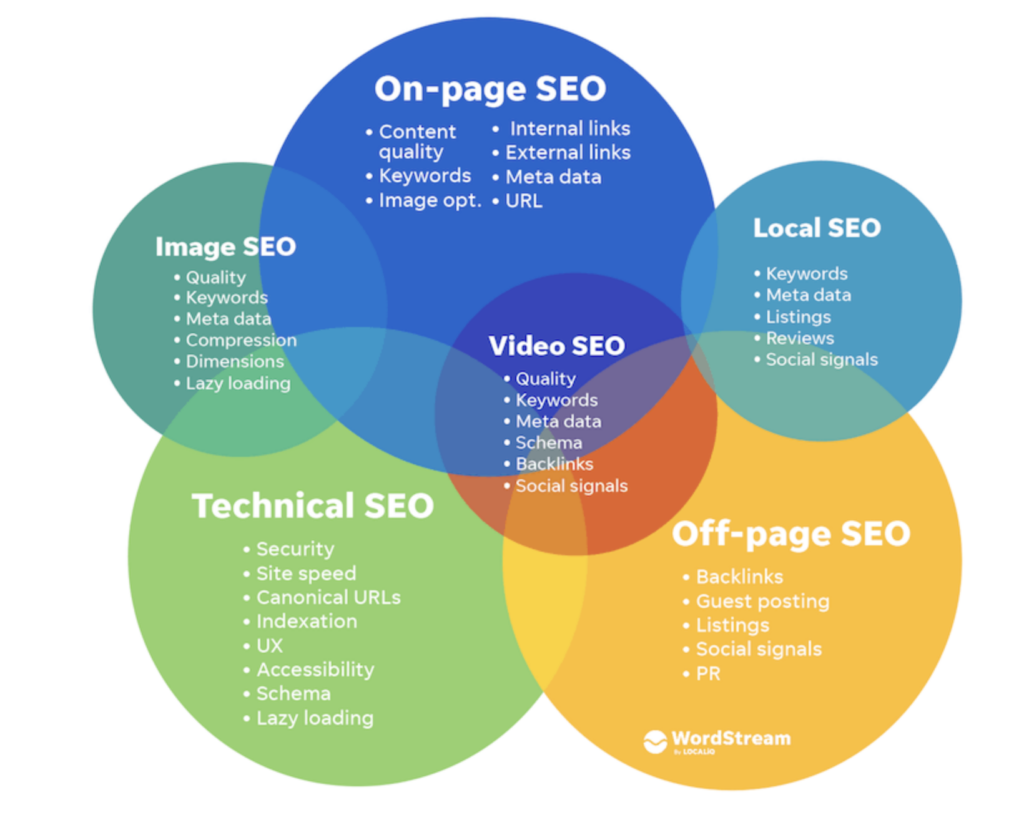
For enhanced online visibility and a higher ranking on results pages, implementing more advanced off-page techniques is key. Guest posting, influencer marketing and content repurposing are just some of the ways to optimize your website’s performance in terms of its page SEO strategy.
To make sure you reap all the benefits that come with these methods, here we will discuss each technique separately while offering useful insights for proper optimization through your off page efforts.
Guest Posting
Guest posting is a type of off-page tactic that enables users to expand their reach and build backlinks from reputable domains. Benefits include having access to new audiences within your target market, valuable links gained through high authority sites as well as gaining extra website traffic which improves rankings on Google’s algorithms.
When it comes to guest posts one must be careful about the quality. In order for them to adhere to Google’s machine learning algorithms and not be disregarded completely.
A great approach when looking into potential opportunities would be running searches with phrases such as “your niche + guest post contribution”. Measuring how successful these strategies are via referral traffic or social shares can help identify good options versus bad ones down the line.
Influencer Marketing
Influencer marketing taps into the trustworthiness of authority figures to amplify a brand, product or service and acquire advantageous backlinks. This technique can improve visibility for your business as well as bolster faith in it and generate helpful links.
Select the right influencer with care is key to avoiding risk. Technology such as Mention.com and BuzzSumo’s “Alerts” will enable you track references to your company name while discovering potential influencers operating within your sphere of interest.
By teaming up with influential people who share similar target market demographics and values compatible with those of your own enterprise, one can experience maximum results from their efforts put towards promotional endeavors via social media celebrities – all while enhancing page seo at the same time.
Content Repurposing
Content repurposing involves taking pre-existing content and adapting it to reach a broader audience, ultimately saving both time and resources. One way of doing this is by altering the format. For example turning a blog post into an infographic or podcast. When engaging in such practices, ensure that you consider your target audiences as well as optimizing for search engines so that quality remains high.
Pay attention to which platform the material will be shared on. This could help you increase visibility further.
Avoiding Common Off-Page SEO Pitfalls

In order to guarantee long-term triumph off page, it is essential to stay away from common mistakes like unnatural link building. Where priority is given on quantity over quality and overlooking user engagement. To prevent these errors, we suggest constructing a robust link building tactic that will serve for the future while reaping optimum benefits.
The following sections contain useful advice about how one can dodge frequent missteps. And create an effective strategy for your webpage’s online presence.
Unnatural Link Building
Creating backlinks which violate policies in an attempt to improve rankings is known as unnatural link building. This activity involves buying links, excessive exchanges of links and the organization of guest posting campaigns. All considered against regulations. They can have dire consequences on a website’s reputation or even lead to it being taken off from SERPs.
To avoid doing anything that might be interpreted by search engines as manipulative behavior, one should focus their efforts on generating compelling content and creating relationships with other websites. It’s equally important to adhere strictly to guidelines imposed by said services if you wish for your page not to get penalized.
Overemphasis on Quantity over Quality
Putting more importance on quantity instead of quality can be detrimental. Generating a lot of low-quality content won’t get you far as opposed to creating high-quality material that will make an impact. Quality should always come first when optimizing for search engines and backlink profile. If not done correctly, rankings are likely going to suffer.
Focusing on the value of what is produced rather than amount pays off: obtaining worthwhile links with authoritative and relevant websites and topics and targeting your audience through useful information results in much better SERP positions while also increasing website traffic due to its relevancy factor.
Ignoring User Engagement
If user engagement is overlooked, it can mean not measuring how visitors interact with the website or neglecting to take action for improving their experience. This leads to a poor customer encounter and lower rankings.
Focusing on user involvement such as social media posts and responding swiftly to any feedback will improve trustworthiness from potential clients. Something essential in order for sites to succeed in earning better results. It is imperative then that attention be paid so people have an enjoyable visit which also means regularly refreshing content plus design of the site too.
Monitoring and Measuring Off-Page SEO Success
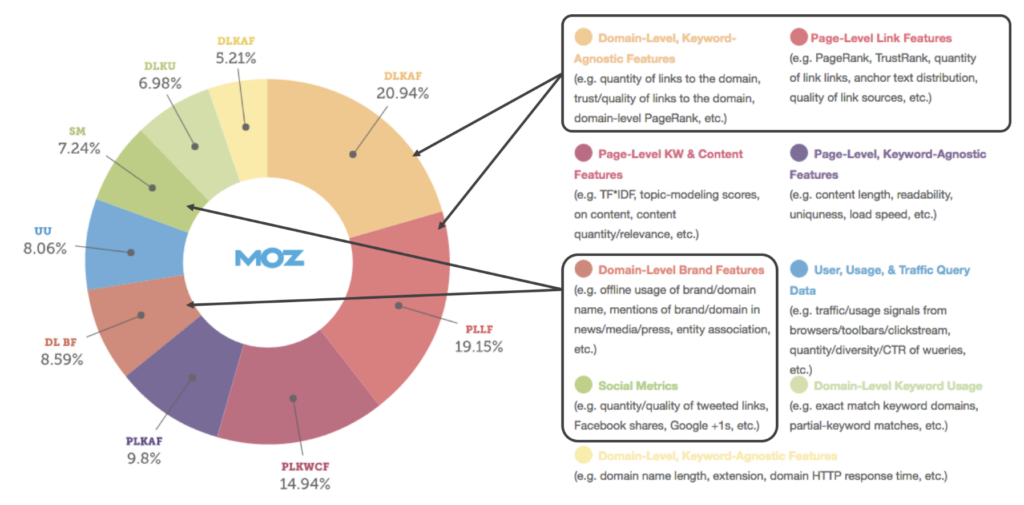
It is essential to evaluate the success of your off-page SEO endeavors, and keeping track of a few metrics such as analyzing backlink profiles, following up on brand mentions, and assessing social media performance are integral.
Keeping an eye out for these details can help you pinpoint areas that need more attention so that adjustments in your SEO strategies will yield better results.
Analyzing Backlink Profiles
Comprehensively assessing the backlinks of a website is essential to its ranking and page SEO performance. Exploring information such as quantity, quality, anchor text, etc., tools like Ahrefs or Majestic can be employed to gain insight into off-page optimization initiatives.
By understanding any potential weaknesses in your link building strategy. You are better able to adapt it for improved results with regard to overall SEO effort.
Tracking Brand Mentions
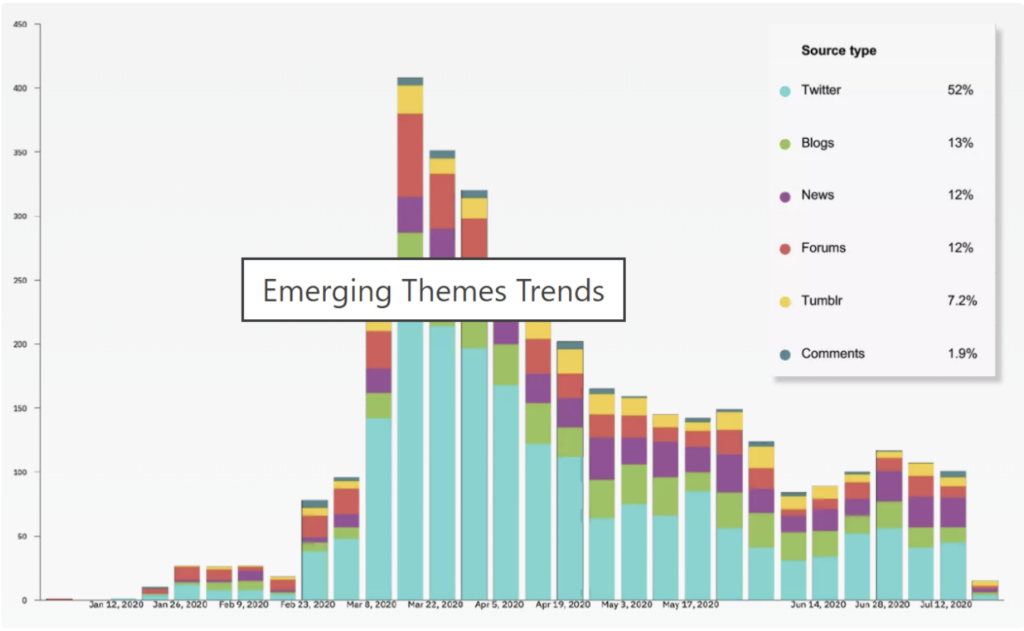
Keeping track of references to your company, product or service online is an essential part of any successful SEO strategy. To gain valuable insights into how people are talking about you and discover influential voices in the community, tracking brand mentions across different platforms like news outlets, social media posts, blogs and reviews is a must.
Mention.com and BuzzSumo’s “Alerts” can help make this process easier for businesses. So they stay informed on their web page reputation while also finding ways to best engage with potential customers according to their needs and preferences.
By monitoring these metrics closely it allows companies identify areas where improvements could be made, allowing them maximize return from campaigns.
Assessing Social Media Performance
By gauging metrics such ranking factors such as engagement, reach and conversions, you can assess the effectiveness of your social media campaigns. This way it is possible to obtain insights into how successful these marketing attempts are in improving off-page SEO strategies.
Engagement rate, impressions and reach should be taken into consideration when evaluating social media performance for improved off page optimization outcomes.
Monitoring this data regularly enables businesses to identify where improvements could be made while ensuring that their efforts towards boosting visibility on website through a presence on various channels show significant progress with regards to authority online.
Tying the Loop
Ultimately, off page SEO is a critical part of any successful digital marketing plan. This includes techniques such as local SEO, link building and social media promotion that can improve website visibility and authority.
Quality should always be prioritized over quantity when implementing an effective Off Page SEO strategy in order to avoid common mistakes like artificial linking practices. By focusing on user engagement, you’ll have more success with your methods resulting in higher search engine rankings for the long-term period.
It’s important to keep track of the results of your efforts so that you may make changes or adjustments whenever necessary towards improving them continuously. Enabling webpages reach up into top positions within search result pages thus expanding online presence significantly by reaching out wider audiences globally through engines like Google etc.
With patience and dedication great outcomes are guaranteed using optimal strategies according to latest trends in this sector.
Frequently Asked Questions
What are examples of off-page SEO?
For effective off-page SEO strategies, link building, content marketing via guest post and social media platforms like podcasting or video sharing must be utilized to help increase website visibility online leading to more traffic.
What is difference between on-page SEO and off-page SEO?
On page SEO focuses on increasing the effectiveness of individual pages by optimizing elements within them. On the other hand, off page SEO concentrates on improving a website’s reputation and creating an authoritative presence through backlinks and content production, both strategies being key to achieving high search engine rankings. In order for these efforts to be successful, all aspects of online optimization need to be taken into consideration: from on-page factors like meta tags, image alt text, etc., to link building campaigns which help raise visibility.
What is on and off-page SEO optimization?
On-page SEO and off-page SEO are integral components of a successful search engine optimization strategy. On-page involves optimizing the content on your website as well as the code, while off-page is about growing visibility in other areas such as social media channels, directories and backlinks.
With both approaches combined, one can elevate their site’s first rank higher: ranking on SERPs (Search Engine Results Pages).
What are the key components of an off-page SEO strategy?
Creating a successful off page SEO plan involves promoting content, doing local SEO and building links. This trio can help improve the reputation of one’s website as well as its positioning on search engines.
What are some advanced off-page SEO techniques?
When looking into advanced off-page SEO, it is essential to create relationships with other websites and consistently repurpose content for higher visibility. This can be done by engaging in guest posts on popular sites, joining forums and taking part in social media conversations. When crafting content, make sure that it has been optimized for search engines, keywords as well as meta tags should always be included! Finally, don’t forget to link back from these external sources directly to your website.
